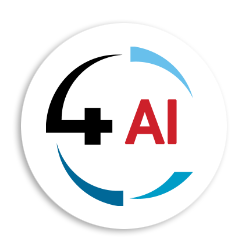Blog
Building Your Azure Practice A-Z: Part 3: Developing Your Azure Offerings

Mastering the technical intricacies of Azure is a monumental achievement, but it does not automatically translate into a viable business. The crucial bridge between technical capability and commercial success is the deliberate and strategic packaging of your expertise into sellable, scalable, and profitable offerings. This phase is about productizing your knowledge, moving away from the nebulous and often discounted model of "time and materials consulting" towards defined solutions with clear value propositions and price tags.
Many technically gifted partners stumble at this stage. They can architect a flawless solution but struggle to articulate its value in a way that resonates with business decision-makers. This phase ensures you avoid that fate by transforming your capabilities into compelling services that customers understand, need, and are willing to pay for.
Defining Your Service Portfolio
The first and most critical step is to move beyond a generic "we do Azure" statement. You must develop a clear portfolio of standard offerings. This creates efficiency in sales, marketing, and delivery, as you are not reinventing the wheel for every client engagement.
A robust Azure practice typically structures its portfolio around three core pillars:
Pillar One: The Advisory and Assessment Offering
This is your entry-point service, designed for clients at the beginning of their cloud journey. It is a low-risk, high-value engagement for the customer that establishes your credibility and often uncovers larger project work. This is not a free consultation, but rather it is a fixed-fee, standardized product. Key offerings should include:
- Cloud Strategy Workshop: A half or full-day session using the Microsoft Cloud Adoption Framework (CAF) to align stakeholders, define business outcomes, and establish a high-level roadmap.
- Azure Migration Assessment: A technical and financial analysis using the Azure Migrate tool to discover on-premises workloads, generate a detailed TCO report, and provide a prioritized migration plan.
- Microsoft Defender for Cloud Review: A security-focused assessment that evaluates a client's cloud posture, identifies misconfigurations and vulnerabilities, and provides a remediation roadmap.
Pillar Two: The Project-Based Implementation Offering
These are your revenue-driving transformation projects. They have a defined beginning, middle, and end.
- Azure Migration Factory: A standardized, repeatable process for lifting and shifting (or modernizing) a batch of servers, often priced per server or per application.
- Modern Data Estate Implementation: A project to design and build a new analytics platform using Azure Synapse Analytics, Data Lake, and Power BI.
- Secure Landing Zone Construction: A fixed-price engagement to implement a CAF-aligned, secure, and governed foundation in Azure using policies, blueprints, and hub-spoke network architecture.
Microsoft also offers programs that can assist you with these projects to aid with funding assessments and possible migrations while you develop your specializations.
Pillar 3: The Managed Service and Optimization Offering
This is your annuity stream, creating long-term, sticky customer relationships and predictable revenue. It focuses on the ongoing management and continuous improvement of the client's environment.
- Azure Managed Services: A tiered offering (e.g., Basic, Standard, Premium) providing 24/7 monitoring, patch management, backup, and support. This is often sold as a monthly subscription based on a percentage of the client's Azure spend.
- Cloud FinOps Service: A dedicated service for continuous cost optimization. This includes monthly reporting, reservation management, identifying wasted spend, and implementing auto-scaling policies. This can be sold as a retainer or as a percentage of the savings identified.
The actionable step is to document these offerings in a formal Service Catalogue. Each offering should have a one-page data sheet outlining its scope, key deliverables, prerequisites, duration, and commercial model (fixed-price, subscription, etc.).
How Will You Get Paid?
Your pricing strategy is as important as the offering itself. Relying solely on time-and-materials creates risk for the customer and limits your scalability. Instead, adopt value-based pricing models.
- Fixed-Price Projects: Ideal for well-scoped implementation offerings like a migration or landing zone build. This requires you to have a deep understanding of the effort involved to price it accurately and profitably. It transfers the risk of overruns to you but is highly attractive to customers who want budget certainty.
- Subscription/Retainer Models: The cornerstone of managed services. This creates predictable, recurring revenue (MRR). Price tiers can be based on the size of the environment (e.g., number of subscriptions, VMs), a percentage of monthly Azure spend (e.g., 10-15%), or a fixed monthly fee for a defined set of tasks.
- Value-Based or Outcome-Based Pricing: The most advanced model, where your fee is tied to achieving a specific business outcome for the client, such as a percentage of the cost savings you generate through optimization. This requires extreme confidence and deep trust but can be incredibly profitable.
The actionable step is to create financial models for each of your offerings in a spreadsheet. Calculate your fully loaded cost of delivery (salaries, overhead, tools) and determine your desired profit margin to arrive at a price.
Leveraging the Azure Marketplace
For partners who develop unique intellectual property (IP) or highly automated solutions, the Azure Marketplace is a powerful channel for scale. Publishing a Managed Service Offer or a SaaS application in the Marketplace allows millions of Azure customers to discover, purchase, and deploy your solution directly.
The process involves a technical and marketing review by Microsoft. Once published, your offering becomes Co-Sell eligible. This means Microsoft's global sales force can see it, reference it, and even earn commission by selling it alongside Azure. This grants you access to Microsoft's enterprise customer base and marketing engines, a privilege reserved for validated solutions.
The actionable step is to evaluate if you have a unique automated solution or service that could be productized for the Marketplace. Even if you're not ready now, understanding this path is crucial for long-term growth.
Developing your offerings is the process of translating technical language into business value. It forces you to think like your customer, who is not buying Azure; they are buying business outcomes agility, security, cost savings, and innovation.
By productizing your services, adopting strategic commercial models, and understanding routes to market like the Azure Marketplace, you build a commercial engine as robust as your technical foundation. You are no longer just a team of Azure experts; you are a solutions provider with a clear menu of services that solve real business problems.
With your offerings defined, you are now ready to take them to the market. My next Blog, "Go-to-Market Strategies for Azure Partners," will focus on building your brand, generating leads, and leveraging Microsoft's immense resources to fill your sales pipeline.
If you require more assistance with this process, please contact your Surestep Ambassador team at This email address is being protected from spambots. You need JavaScript enabled to view it. to assist you with possible guidance building a successful Azure Practice.


